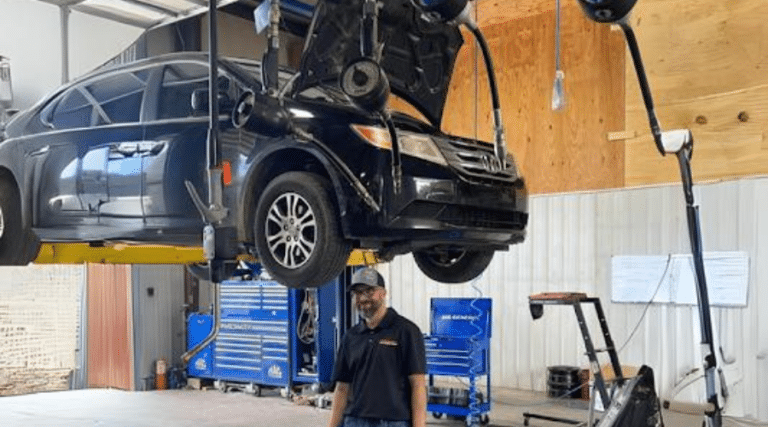All Categories
Featured
Your car's brakes are just one of one of the most crucial components in guaranteeing your safety and the security of others when driving. Regular brake assessments are essential to maintaining optimal braking efficiency and avoiding expensive repairs. Whether you're a seasoned vehicle proprietor or a brand-new vehicle driver, comprehending brake inspection standards can help you remain aggressive about upkeep and ensure your car is always roadworthy.
- Why Brake Inspections Matter. Brakes are subject to continuous wear and tear. The even more you drive, the much more rubbing your brake pads endure, ultimately bring about minimized braking performance. Without appropriate examination, it's tough to gauge when your brakes may be in requirement of repair. Routine brake checks help identify concerns early, protecting against possible failures that can put you at danger.
A well-kept brake system ensures fast, responsive stopping power, particularly in emergencies. It additionally aids extend the life of your vehicle, as overlooking brake maintenance can lead to much more extreme, costly issues later on.
- Indications You Need a Brake Evaluation. While it's essential to have your brakes inspected occasionally, particular signs might indicate that they require interest. Watch (and ear) out for these warning signals:
Squealing or Grinding Noises: Uncommon sounds, particularly a shrill squeal or grinding sound, commonly mean that your brake pads are worn down. Resonance or Pulsation: If you feel vibrations or a pulsing feeling when pressing the brake pedal, maybe an indicator of warped rotors or unequal brake pad wear. Minimized Brake Responsiveness: If your brakes really feel less receptive or you have to push the pedal harder to reduce, it may show air in the brake lines or reduced brake fluid. Pulling away: If your automobile draws to one side when stopping, it might mean uneven brake pad wear or a brake liquid leakage. Dashboard Caution Lights: Some vehicles have brake-related caution lights that show issues like reduced brake liquid or used brake elements. If you see any of these symptoms, it's vital to have an expert mechanic carry out a brake assessment as soon as possible.

- What Takes place Throughout a Brake Assessment? During a brake inspection, a mechanic will inspect several essential components of the stopping system to make certain everything is in functioning order. Below's what you can expect during the process:
Brake Pads and Shoes: The technician will certainly examine the density of the brake pads or footwear. If they're too slim, they'll need to be changed. Brake Rotors: Blades are the discs that the brake pads press versus to reduce your automobile down. They'll be checked for any signs of wear, racking up, or warping. Brake Liquid: Low or infected brake liquid can impair stopping performance. The service technician will certainly check the liquid degree and high quality and leading it up or flush it if needed. Brake Lines and Hose pipes: Brake lines carry fluid from the master cyndrical tube to the brakes. The auto mechanic will inspect for any leakages, splits, or damage to guarantee proper fluid flow. Brake Calipers and Wheel Cyndrical Tubes: Calipers and wheel cylinders push the brake pads versus the rotors or drums. The professional will examine for wear, leaks, and appropriate procedure. 4. How Frequently Should You Have Your Brakes Examined? The regularity of brake evaluations relies on factors like your driving behaviors, the kind of car you drive, and the setting in which you drive. As a basic regulation, it's a great idea to have your brakes inspected every 12,000 miles or yearly. If you experience any of the warning indications discussed previously, it's crucial to get your brakes checked right away.
For those that regularly drive in rush hour, hilly terrain, or rough climate condition, even more frequent examinations might be necessary.
- Significance of Timely Brake Services. When you identify a problem with your brakes, it's important to resolve it right now. Postponing brake fixings can result in even more substantial damages to your braking system, resulting in higher repair service costs. In severe cases, disregarding brake issues can result in complete brake failure, which is a severe safety and security risk.
By remaining on top of brake maintenance and resolving issues immediately, you make sure that your brakes remain to execute as planned, keeping you and your travelers safe on the roadway.
Final Thought: Keep Your Brakes in Top Forming. Brake inspections are a simple yet crucial part of vehicle maintenance. By recognizing the importance of normal inspections, understanding the indications of brake problems, and remaining aggressive with repair services, you can ensure your lorry's stopping system continues to be in optimal problem. Normal brake checks give comfort, recognizing that your cars and truck is prepared to respond when you require it most. Prioritize brake maintenance-- your security depends on it.
Latest Posts
Identifying When Your Car Needs Skilled Auto Repair at Montclare Auto Repair
Discover the Leading Auto Repair Deals in Montclare, Chicago
Explore Reduce Expenses on Car Maintenance with Montclare Auto Repair’s Limited-Time Deals
More
Latest Posts
Identifying When Your Car Needs Skilled Auto Repair at Montclare Auto Repair
Discover the Leading Auto Repair Deals in Montclare, Chicago
Explore Reduce Expenses on Car Maintenance with Montclare Auto Repair’s Limited-Time Deals
